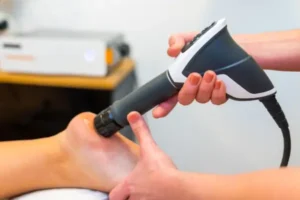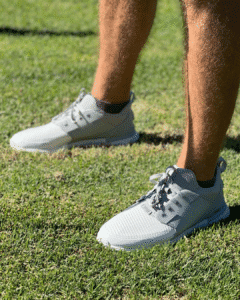At least 25% of us will experience knee pain at some point in our life. It can happen to us at any age, any time and with no direct mechanism of injury. For this reason, knee injuries can be quite frustrating when trying to return to sport or activity. Sharp, dull, aching and all of the above! They seem to linger and always let us know during activity “HEY! I’m still here”. But is it really the knee that is the source of the issue? Or do we need to investigate elsewhere?
Sure, if you have sustained a serious blow to the knee and there is pain after – it’s probably safe to assume that was the cause. But in MANY circumstances, it isn’t. Time and time again I hear “everything felt fine and then all or a sudden” or ” I just woke the next day” with some stiffness or pain. So what could be driving this mysteriously sore knee?
First, I think it is important that we understand the joints in our body like to alternate between mobility and stability. When we look at how the knee moves in relation to the hip and ankle, we start to see that the knee is quite a stable joint in comparison to the others being more mobile. This by no means is me saying some joints are just mobile OR stable all joints need a balance of both, but we find some tend to favor one side of the spectrum.
So, to simplify things, looking at the lower limb:
- Ankle: mobile joint
- Knee: stable joint
- Hip: mobile joint
So, the fact that the knee is only moving, largely, in two directions appears that there must be other culprits at hand contributing to the knee pain. Because what this says is the knee is being asked to increase its natural rang of motion or requirements because one of the other joints are not doing their job, which is to be more mobile. What we end up finding with our painful knee is a problem at the hip and/or the ankle-foot complex.
Some examples that could be contributing to the knee pain include but are not limited to:
- Poor ankle dorsiflexion
- Poor foot arch support (aka flat feet)
- Limited hip external rotation
- Weak/inhibited gluteals/tight ITB
- Over active vastus lateralis
- Underactive Vastus medialis
- Weak/inhibited tibialis posterior/anterior
Such issues as stated above can increase what we call the ‘knee valgus angle’ or ‘knocked knees’ which can lead to kneecap tracking issues as well as loading issues when we strike the ground. This is what we call Patellar Femoral Pain Syndrome or (PFPS) for short. This is what is driving our ongoing or “niggling” knee pain. The knee is being asked by the ankle and hip to “DO MORE” which will eventually lead to bigger problems down the track. Long term affects of this can lead to wearing of the cartilage and advanced arthritis, also know as Chondromalacia Patella.
Other issues may arise from chronic poor knee loading such as but not limited to:
- Meniscal irritation/tear
- Collateral ligament irritation/sprain
- Pes ansurine bursitis
In saying all this of course we do want to control the symptoms around the knee. But we can treat the knee only until the cows come home and what do we find? Reoccurring knee issues. We must address the lower limb as a unit of motion when looking at knee pain to ensure maximal stability and mobility during activity.
Therefore, if we can improve the function at the hip and ankle we should see a much happier knee for longer periods of time.
Get in touch with us here to book your next appointment.
Disclaimer: This post is for general information only and is not a substitute for personalised medical advice. If you’re experiencing recurring or concerning symptoms, especially neurological ones and or severe uncharacteristic headaches, please speak to your GP or seek urgent medical care. Social media isn’t a diagnosis tool, even when it’s run by a qualified health professional.





